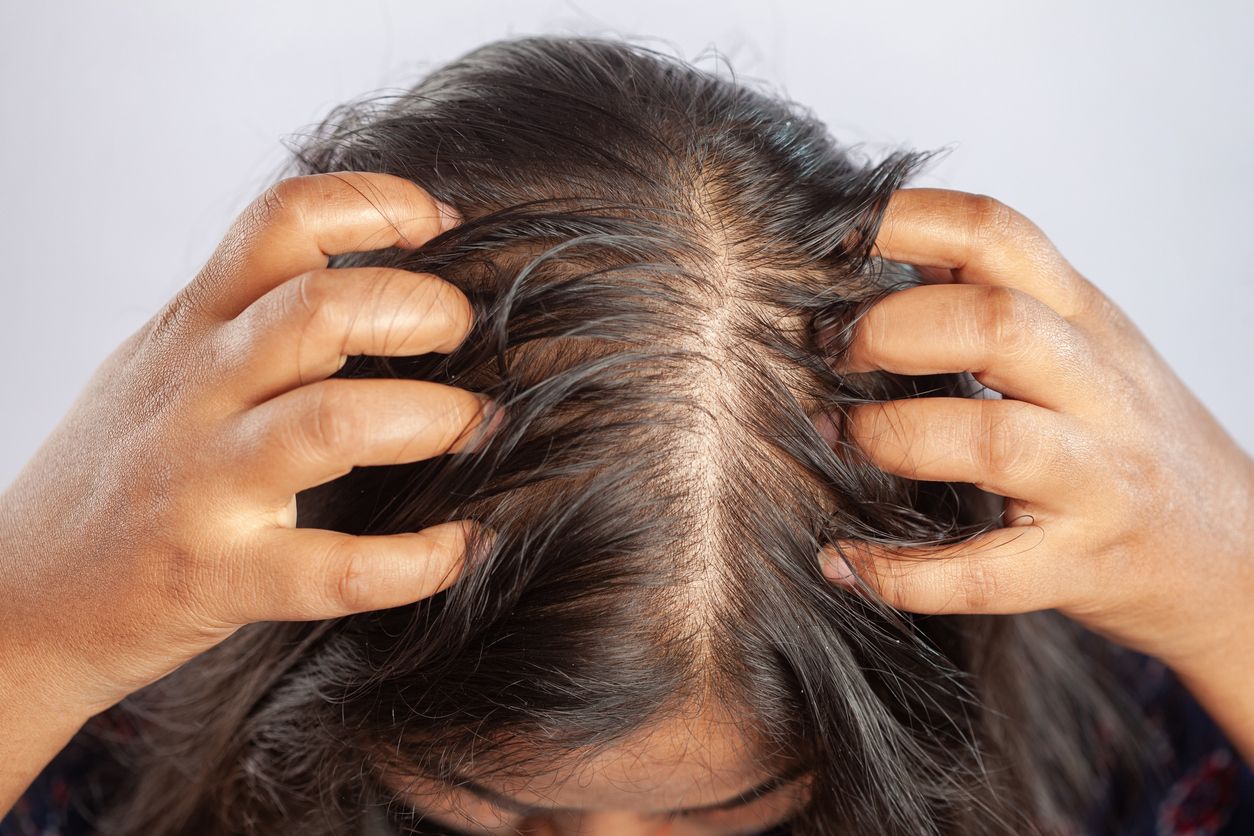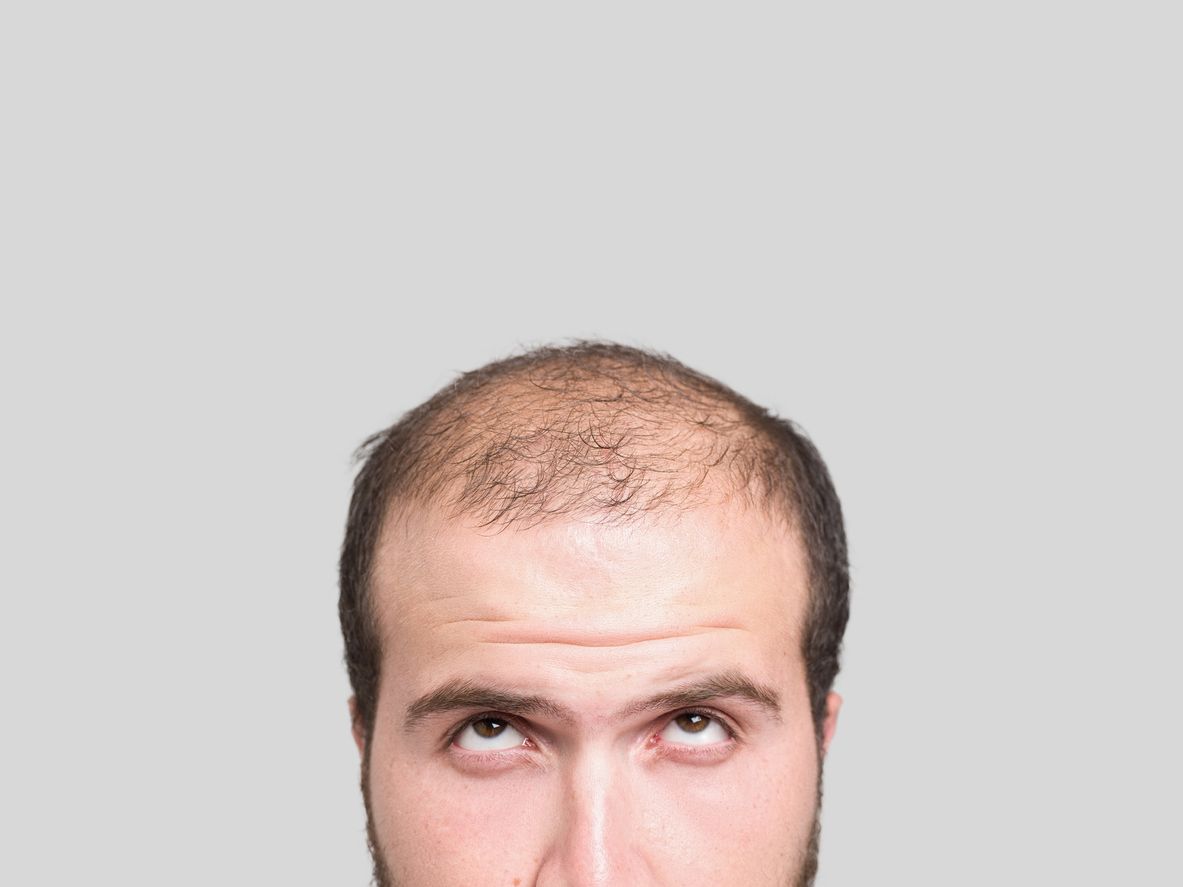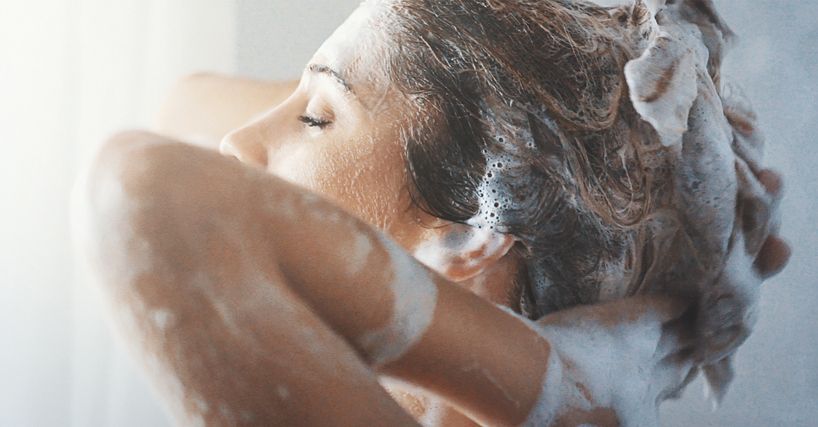
Author: Natalie Ng|Updated: 7 May 2025
Seeing a bald spot on your head can be frustrating. One day your hair looks fine, then suddenly there’s a patch where it’s thinner or completely gone. It might show up slowly or all at once. This kind of hair loss often points to something deeper, like alopecia areata—where your immune system attacks your hair follicles. It can also come from thyroid issues, stress, or even something in your family history. You might notice small round patches, scattered thinning, or in rare cases, total hair loss on the scalp or body. These changes can hit your confidence, but they don’t have to stay permanent. Some people see regrowth after a few months, others need more support. The good news is, there are real steps you can take to stop further hair loss and help new hair grow. This guide walks you through what causes bald spots, how to spot the signs early, and ten simple ways to help your hair recover naturally.

What Causes a Bald Spot on Head?

Hair Loss Happens When the Growth Cycle Is Disrupted
Hair grows in a natural cycle of growth, rest, and shedding. You usually lose some hair every day, which is normal. But when that cycle breaks down—due to internal or external factors—you may start losing more hair than you grow. That imbalance can lead to noticeable thinning or bald spots.
Alopecia Areata: An Autoimmune Trigger
Alopecia areata is a condition where your immune system targets your own hair follicles by mistake. This attack causes hair to fall out, often in small, smooth, round patches. These patches can develop quickly and might appear anywhere you grow hair, including your scalp, eyebrows, or beard.
Connections to Other Autoimmune Conditions
If you have another autoimmune condition like thyroid disease, vitiligo, or type 1 diabetes, your risk of developing alopecia areata is higher. These conditions involve an overactive immune system, which can lead to similar patterns of inflammation and tissue damage—hair follicles included.
Types of Alopecia Areata and Their Patterns
• Patchy Alopecia Areata: The most common type. It shows up as one or more round bald patches on the scalp or other areas.
• Diffuse Alopecia Areata: Causes even thinning across the scalp, without visible patches. It may look like general hair shedding.
• Alopecia Totalis: All the hair on your scalp falls out.
• Alopecia Universalis: The most advanced form. It results in complete loss of scalp and body hair, including eyebrows, eyelashes, and facial hair.
Other Factors That Can Worsen Hair Loss
Stress, infections, or hormone shifts can trigger or intensify hair loss. Events like major illness, emotional strain, or thyroid changes can confuse your immune system. This can lead to new bald spots or cause existing ones to grow.

Recognize the Symptoms of Alopecia Areata

1. Sudden Hair Loss in Small, Round Patches
One of the first signs of alopecia areata is the appearance of one or more smooth, round patches where hair has fallen out. These bald spots often show up on the scalp but can also affect the beard, eyebrows, or other areas. The skin in these patches usually looks normal—no flaking, redness, or irritation. The hair often falls out quickly, sometimes overnight or over just a few days. You may not feel anything while it’s happening, or you might notice mild itching or tingling beforehand.
2. Thinning Across the Scalp Without Clear Patches
Not all cases start with a round bald spot. In diffuse alopecia areata, hair thins out across your whole head instead of forming a defined area. This makes it harder to recognize at first because it can look like general hair loss or shedding. You might see more hair in your brush or shower drain, or notice your part widening or your ponytail feeling thinner.
3. Regrowth Appears as White or Fine Hair
In many cases, hair starts to regrow on its own. At first, it may look different—thin, soft, or white—especially in people with darker hair. Over time, the color and thickness may return, but not always. It’s common for this new hair to fall out again in future flare-ups, which is part of what makes alopecia areata unpredictable.
4. Exclamation Point Hairs at the Edge of Bald Spots
A unique sign of alopecia areata is the presence of “exclamation point hairs.” These are short, broken strands that are narrow at the base and thicker at the tip, kind of like an exclamation mark. They often appear around the border of a bald patch and suggest active shedding. Spotting these early can help confirm that hair loss is progressing and not yet stable.
5. Changes in Fingernails or Toenails
Nail changes can also appear in people with alopecia areata, especially in more severe cases. You might see small dents (called pitting), ridges, or white spots. Nails may also become rough or lose their natural shine. These signs often show up alongside hair loss, but sometimes they appear first, especially in children.
6. Total Loss of Hair on Scalp or Body in Severe Cases
In more advanced stages, alopecia areata can lead to alopecia totalis (complete loss of scalp hair) or alopecia universalis (loss of all body hair). These forms are less common, but they develop when the immune system continues to attack follicles over a larger area. The change may happen gradually or within a few weeks. At this stage, you’ll notice that not only the scalp is bare, but eyebrows, eyelashes, and even arm or leg hair can fall out as well.
Book Now to Experience
F8 Hair Regrowth Treatment
1 Minute Self-Registration
Date should not be before minimal date

Effective Ways to Regrow Your Hair Naturally
1. Use Natural Oils and Massage Techniques
Natural oils like rosemary, castor, and peppermint may support regrowth by improving circulation, reducing inflammation, and nourishing the scalp. Rosemary oil is believed to help block DHT and stimulate blood flow. Castor oil is thick and rich in ricinoleic acid, which helps moisturize the scalp and may support hair follicle function. Peppermint oil has a cooling effect and can improve local circulation. Massage helps, too. It improves blood flow to the follicles and relaxes tight muscles around the scalp. When you apply oil, use your fingertips to gently massage in circular motions for 5–10 minutes. Use a carrier oil like coconut or jojoba as a base, then mix in a few drops of essential oil. Leave the oil on for 30 minutes or overnight, then rinse. Repeat 2–3 times per week for best results.
2. Improve Your Diet to Support Hair Regrowth
Hair needs key nutrients to grow well. Vitamin D, Iron, Zinc, and Biotin all help support the health of your follicles and reduce inflammation in the scalp. A lack of any of these can weaken your hair or slow its growth. Try to eat foods like eggs, salmon, spinach, lentils, seeds, and nuts. Drink enough water daily. Avoid crash diets, as they can cause shedding or delay regrowth. Consistency in your eating habits plays a bigger role than you might expect.
3. Use Gentle Shampoos and Avoid Harsh Chemicals
Many commercial shampoos contain sulfates, parabens, or added fragrance—ingredients that can dry out your scalp and irritate hair follicles. This is especially damaging if you're already experiencing hair loss. Look for products labeled “sulfate-free” or “for sensitive scalp.” Ingredients like oat extract, aloe vera, or chamomile are helpful. Wash your hair with lukewarm water and rinse thoroughly. Avoid scrubbing aggressively or over-washing.
4. Try Natural Topical Remedies
Some natural ingredients may help stimulate follicles and soothe the scalp. Onion juice is high in sulfur, which supports circulation and collagen production. Saw palmetto is often used to balance hormones that can trigger hair loss. Aloe vera calms the skin and reduces redness or irritation. You can apply these ingredients directly to the bald spot 2–3 times per week. Always test a small area first. Onion juice should be left on for 20–30 minutes and then rinsed. Aloe vera gel can be applied for longer, even overnight.
5. Minimize Stress to Prevent Further Hair Loss
Stress can disrupt the hair growth cycle and worsen autoimmune activity linked to alopecia areata. It also causes the body to release hormones that may push hair into the resting phase, leading to shedding. Focus on getting enough sleep and maintaining daily routines that help you relax. Go for a walk, listen to music, or spend time offline. You don’t need a strict routine—small, calming habits repeated daily can have a big impact.
6. Avoid Tight Hairstyles and Heat Styling
Tight styles like braids, high ponytails, and buns pull on the roots and can damage the follicle, especially in thinning areas. This can cause a type of loss called traction alopecia. Let your hair rest when possible. Use soft ties and loose styles. Avoid frequent use of heat tools like straighteners or curling wands, which weaken the hair shaft and dry the scalp. When you do use heat, apply a protectant and keep the temperature low.
7. Apply Onion Juice for Sulfur-Rich Stimulation
Onion juice is rich in sulfur, which may help improve blood flow to the scalp and support hair structure. It also has antibacterial properties, which keep the scalp healthy. Chop or blend a raw onion and extract the juice. Apply to clean, dry scalp, focusing on the bald area. Let it sit for 20–30 minutes, then rinse thoroughly. Use 2–3 times per week, and always do a patch test beforehand.
8. Incorporate Aloe Vera for Scalp Health
Aloe vera helps soothe an inflamed or itchy scalp and supports healing of the skin. It reduces redness, calms irritation, and moisturizes dry areas—especially useful if the scalp is flaky or tight. Use pure aloe vera gel and apply a thin layer to the affected area. Leave it on for 30–45 minutes before rinsing with lukewarm water. Use 2–3 times per week or leave on overnight for added hydration.
9. Use Ginseng to Support Hair Follicle Activity
Ginseng may stimulate dormant hair follicles and improve scalp circulation. Its active ingredients, called ginsenosides, are thought to support hair density and strength. You can apply ginseng-infused oils or serums directly to the scalp and leave them on for 30–60 minutes before washing. Ginseng is also available in supplement form, but consult a healthcare provider before starting new supplements.
10. Exfoliate Your Scalp to Remove Buildup and Stimulate Follicles
Dead skin cells, excess oil, and product residue can accumulate on your scalp, clogging hair follicles and potentially hindering hair growth. Regular scalp exfoliation helps to clear this buildup, promoting a healthier environment for hair follicles and encouraging new growth.
You can exfoliate your scalp using natural scrubs made from ingredients like sugar, salt, or coffee grounds mixed with oils such as coconut or olive oil. Gently massage the mixture onto your scalp in circular motions for a few minutes before rinsing thoroughly. This process not only removes impurities but also stimulates blood circulation, which is beneficial for hair growth.
Incorporating scalp exfoliation into your hair care routine once a week can help maintain a clean and healthy scalp, providing a solid foundation for hair regrowth.
11. Use Rice Water to Strengthen and Grow Hair
Rice water, the starchy liquid left after soaking or boiling rice, has been used for centuries in Asian cultures to promote hair health. It's rich in amino acids, vitamins B and E, minerals, and antioxidants, which can nourish hair follicles, improve hair elasticity, and reduce surface friction. Inositol, a carbohydrate found in rice water, is known to penetrate damaged hair and repair it from within, even remaining in the hair after rinsing to offer ongoing protection.
To use rice water, rinse half a cup of uncooked rice thoroughly to remove impurities. Place the rinsed rice in two to three cups of water and let it soak for 30 minutes. Strain the rice, collecting the water in a clean container. After shampooing, pour the rice water onto your scalp and hair. Gently massage your scalp for a few minutes, then leave the rice water on your hair for 20 minutes. Rinse thoroughly with warm water. Use this treatment once or twice a week to see improvements in hair texture and strength.
12. Apply Fenugreek Seed Paste to Enhance Hair Growth
Fenugreek seeds are a rich source of protein and nicotinic acid, both of which are known to be beneficial against hair fall and dandruff. They also contain lecithin, which hydrates the hair and strengthens the roots. The antioxidant and anti-inflammatory properties of fenugreek seeds help fight hair loss, dandruff, scalp infections, and hair damage.
To prepare a fenugreek seed paste, soak two tablespoons of fenugreek seeds in water overnight. In the morning, grind the soaked seeds into a fine paste. Apply the paste to your scalp and hair, ensuring even coverage. Leave it on for about 30 minutes, then rinse thoroughly with a mild shampoo. Apply this mask once a week. Regular use can help in rebuilding hair follicles, promoting hair growth, and adding shine to your hair.
13. Apply Apple Cider Vinegar to Balance Scalp pH and Promote Hair Health
Apple cider vinegar (ACV) is known for its ability to balance the scalp's pH, remove product buildup, and enhance hair shine. By clarifying the scalp, ACV creates a healthier environment for hair follicles, potentially supporting hair growth.
To use ACV, dilute half a tablespoon in eight ounces of water. Apply this mixture to your scalp and hair, let it sit for a few minutes, then rinse thoroughly. Follow up with your regular shampoo and conditioner. Use this treatment once or twice a week to maintain scalp health and hair vitality.
14. Incorporate Biotin-Rich Foods to Strengthen Hair
Biotin, or vitamin B7, plays a crucial role in keratin production, which is essential for strong and healthy hair. A deficiency in biotin can lead to hair thinning and loss. Including biotin-rich foods in your diet can support hair strength and growth.
Foods high in biotin include eggs, nuts, seeds, salmon, and sweet potatoes. Consuming these regularly can help maintain adequate biotin levels, supporting overall hair health. Before considering biotin supplements, consult with a healthcare professional to ensure they're appropriate for your needs.
15. Use Green Tea Rinse to Stimulate Hair Growth
Green tea is rich in antioxidants, particularly catechins, which can help reduce hair loss and stimulate hair growth by improving blood circulation to the scalp.
To prepare a green tea rinse, brew two green tea bags in a cup of hot water and let it cool. After shampooing, pour the cooled tea over your scalp and hair, gently massaging it in. Leave it on for 10 minutes before rinsing with cool water. Use this rinse once or twice a week to promote healthier hair growth.

When to Seek Medical Help
1. Sudden or Patchy Hair Loss
If you notice abrupt hair loss or develop bald patches, it could indicate an underlying condition like alopecia areata, an autoimmune disorder where the immune system attacks hair follicles. Early consultation with a dermatologist is crucial for diagnosis and management.
2. Persistent Shedding Beyond Normal Levels
While it's normal to shed 50 to 100 hairs daily, excessive shedding that doesn't subside may signal conditions such as telogen effluvium or hormonal imbalances. A healthcare professional can help identify the cause and recommend appropriate treatments.
3. Scalp Discomfort or Skin Changes
Experiencing itching, redness, flaking, or soreness on the scalp alongside hair loss may point to infections or dermatological conditions like seborrheic dermatitis or psoriasis. Seeking medical advice can lead to effective treatment plans.
4. Family History of Hair Loss
A family history of hair loss increases your risk of hereditary conditions such as androgenetic alopecia. Early intervention can slow progression and preserve hair density.
5. Hair Loss Following Hormonal Changes
Significant hormonal shifts due to pregnancy, menopause, or discontinuation of hormonal contraceptives can lead to temporary hair loss. If hair doesn't regrow after hormonal levels stabilize, consult a healthcare provider for evaluation.
6. Nutritional Deficiencies
Deficiencies in essential nutrients like iron, zinc, and biotin can contribute to hair thinning. A medical professional can assess your nutritional status and recommend dietary adjustments or supplements.
F8 Hair Regrowth Treatment: A Non-Invasive Option to Support Hair Regrowth
What Is F8 Hair Regrowth Treatment?
F8 Hair Regrowth Treatment is a non-invasive hair and scalp therapy designed to support natural hair regrowth and improve scalp conditions in people experiencing a bald spot on head, patchy hair loss, or early signs of alopecia areata. It combines low-level laser therapy (LLLT) with a specialized hair growth serum to reactivate inactive hair follicles and stimulate the hair papilla. The treatment enhances microcirculation in the scalp by strengthening nearby capillaries, which improves nutrient delivery to the hair follicles. As a result, the scalp feels healthier, and hair growth is naturally encouraged over time.
How Does It Work?
The treatment starts with a professional analysis of the client’s hair loss pattern using high-magnification imaging to evaluate scalp condition and hair follicle health. Once the areas of concern are identified, the therapist uses a handpiece to apply low-energy laser evenly across the scalp. This process stimulates blood flow, energizes the follicles, and activates the papilla within each hair root. After the laser phase, a hair growth serum is evenly applied to the scalp. The laser helps the serum absorb more effectively into the skin, cleansing the scalp, calming excess sebum production, and unclogging pores. This helps balance oil production and creates a favorable environment for new hair growth. The overall effect is increased volume, better scalp comfort, and improved follicle function.
Advantages of F8 Hair Regrowth Treatment
Non-Invasive: No wounds, needles, or surgery—F8 delivers results using gentle laser technology.
Safe for Both Men and Women: Ideal for treating bald spots in both male and female pattern hair loss or autoimmune-triggered shedding.
No Downtime: Clients can return to normal routines right after the session.
Targets Hair Follicles Directly: Laser energy and serum work together to wake up dormant follicles and support new hair growth.
Improves Scalp Conditions: The treatment helps calm inflammation, manage sebum, and reduce clogged pores—important for those with alopecia areata, thyroid-related hair loss, or signs of autoimmune diseases.
Why Choose F8 for Bald Spots?
A bald spot on the scalp often means that certain hair follicles have become inactive due to poor circulation, autoimmune activity, or blocked pores. F8 Hair Regrowth Treatment directly targets these problem areas using low-level laser energy and nutrient-rich serum. It strengthens the papilla and improves microcirculation, both of which are essential for healthy hair growth. Whether you're managing symptoms of alopecia areata, experiencing diffuse thinning, or seeing early signs of alopecia totalis, this treatment helps support hair regrowth and scalp recovery without medication or invasive procedures.
Concerned about a bald spot or thinning patch? Book your consultation for F8 Hair Regrowth Treatment today and give your scalp the boost it needs to start growing healthier, stronger hair.
F8 Hair Regrowth TreatmentBook Now to Experience
F8 Hair Regrowth Treatment
1 Minute Self-Registration
Date should not be before minimal date
FAQ
1. Can a bald spot on head grow back on its own without treatment?
Yes, in some cases, a bald spot on head may grow back on its own, especially if the cause is temporary, like stress or a recent illness. However, in conditions like alopecia areata or autoimmune-related hair loss, regrowth may be unpredictable or incomplete without support. Early intervention—whether through topical products, lifestyle changes, or professional treatments—can improve outcomes and prevent further hair loss from spreading.
2. How can I tell the difference between patchy hair loss and female pattern baldness?
Patchy hair loss usually appears suddenly as well-defined bald patches and is commonly linked to alopecia areata or an autoimmune condition. Female pattern baldness, also known as androgenetic alopecia, tends to cause gradual thinning over time, usually along the top and crown of the head. A clinical evaluation of your hair follicles and scalp is often needed to identify the correct type of hair loss and choose appropriate treatment options.
3. Are there early signs that alopecia areata might be developing?
Yes, in addition to visible round bald patches, early signs of alopecia areata can include increased hair shedding, tingling or itching in specific scalp areas, or the presence of exclamation point hairs around thinning zones. Nail changes—like tiny dents or white spots—can also be a symptom of autoimmune diseases that affect hair follicles. If you notice these signs, it's best to consult a healthcare provider before the condition progresses to more severe forms like alopecia totalis or alopecia universalis.
4. Will hair that regrows after alopecia areata be the same as before?
Hair regrowth after alopecia areata varies from person to person. In many cases, the new hair may come in fine, white, or lighter than your natural color at first. Over time, it often regains its original texture and shade. However, in some people—especially those with repeated flare-ups or diffuse alopecia areata—regrowth may be slower, or the new hair may remain different in texture or color permanently.
5. Can lifestyle changes help with hair regrowth if I have a bald spot or thinning areas?
Yes, managing your lifestyle plays a role in supporting hair regrowth and preventing further hair loss. Reducing stress, maintaining a balanced diet rich in nutrients that support hair follicles, avoiding harsh chemicals or tight hairstyles, and protecting your scalp from UV damage can all make a noticeable difference. These actions help reduce inflammation and stabilize the immune system—both important for those with alopecia areata or autoimmune-related hair thinning.
Recommended Articles
COPYRIGHT© NEW BEAUTY MANAGEMENT LIMITED 2025. ALL RIGHT RESERVED.




